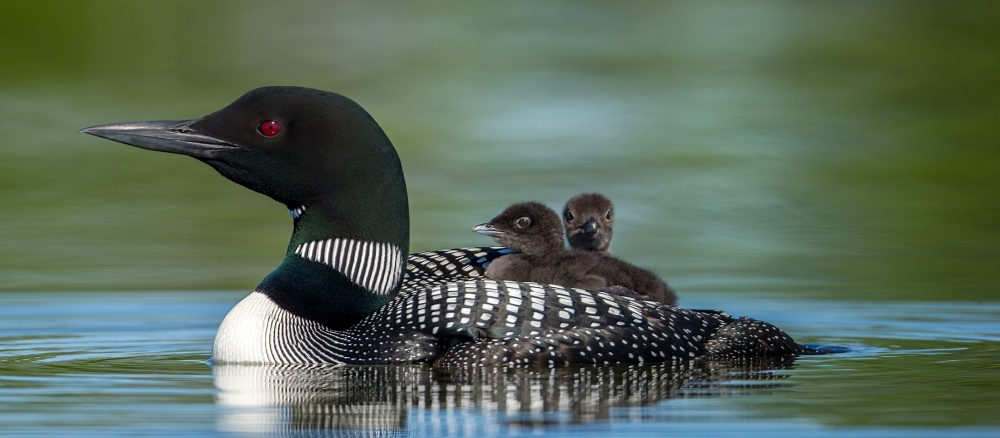Lead-free tackle rebate program puts more tungsten on store shelves, fewer loons and other birds at risk of lead poisoning
Loons hold a prominent place in Minnesota culture. The state bird appears on the state seal, in massive sculptures across the state, and even as sports team mascots (remember Twinkie the Loon?).
Fishing also holds a prominent place in Minnesota culture, as anybody who’s whiled away an afternoon on a bass boat can attest.
To make sure one of those Minnesota icons doesn’t harm the other, the MPCA is promoting the spread of lead-free fishing tackle to reduce the number of loon deaths from lead weights, sinkers, and jigs.
And as it turns out, lead-free tackle may give anglers an edge in their attempts to land that big bass or walleye.
A problem for people and for wildlife
Mark Pokras has been fishing most of his life. Probably like many other anglers, he’s bit on split-shot lead weights to secure them on his line. He never experienced any health effects from doing so because adult human males can withstand small levels of lead without ill effect.
Children under age 6 and pregnant people, on the other hand, are far more sensitive and, as a result, should never be exposed to lead due to a variety of dangerous health effects from lead exposure. Even more sensitive to lead poisoning than children and pregnant people, he noted, are many animals, with loons some of the most sensitive of all.
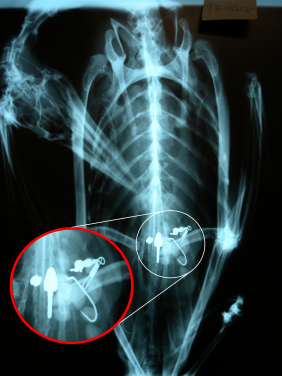
While nobody has figured out the exact amount of lead that poisons loons, Pokras said loons have similar sensitivity to bald eagles and studies show that as little as 85 milligrams of lead — about the size of two grains of rice — is enough to cause fatal lead poisoning in bald eagles.
Pokras knows all about this because, as an associate professor emeritus at Tufts University’s Cummings School of Veterinary Medicine, he studies bird anatomy and pathology and is often called on to perform necropsies of loons and other birds found dead in the wild.
“I see a lot of loons in pretty good shape — really healthy birds otherwise — that have died quickly from lead poisoning,” Pokras said. “It’s really nasty stuff for loons.”
Other aquatic birds can take months to die of lead poisoning, but Pokras said that loons die quickly once they ingest lead — anywhere from 10 days to three weeks. That’s because loon bodies are structured to efficiently absorb and distribute calcium and because lead easily mimics calcium in human and animal bodies.
“The science is incontrovertible about the toxicology of lead,” he said.
Why lead tackle is to blame for loon deaths
Pokras said there’s really only one source of the lead that kills loons: fishing gear.
One commonly held assumption for how loons ingest lead, Pokras said, is that the lead weights that anglers use and often lose while fishing resembles the pebbles that loons scoop up from the bottoms of lakes to aid in their digestion. Theoretically, this would also apply to hunters’ lead shot, dispersed over lakes when they take aim at other targets.
However, Pokras cited studies that show a tight correlation between fishing seasons and loon deaths.
“When more fishermen are on the lakes, more loons come in dead,” he said. “And we virtually always find lead fishing weights in the gizzards of loons that die from lead poisoning.”
Pokras said that means loons more likely get poisoned when they dive beneath the surface of the water and snatch live bait or hooked fish from lines that hold lead fishing tackle or when they come along a struggling fish that got away with somebody’s lead tackle.
“Loons aren’t dumb,” Pokras said. “They know it’s easier if they can catch a fish that’s already caught or compromised.”
Loons’ powerful gizzards can usually break down hooks and filament, Pokras said, just not the lead.
Lead alternatives emerge
While Pokras has tried many alternatives such as actual pebbles and steel hex nuts as sinkers, anybody looking for lead-free tackle in stores will most likely find it made of tungsten.
At Northwoods Bait and Tackle in Bemidji, just a few miles from walleye hotspot Lake Bemidji, it’s not hard to find tungsten sinkers and jigs. They take up entire aisles and endcaps in the store, their fluorescent coloring just as apt to attract a shopper’s eye as a fish. Store owner Aaron Schmitz even highlights the tungsten gear with special cards.
“None of the other non-toxic tackle has really taken off and grown like tungsten,” Schmitz said. “Everybody and their cousin is making tungsten now.”
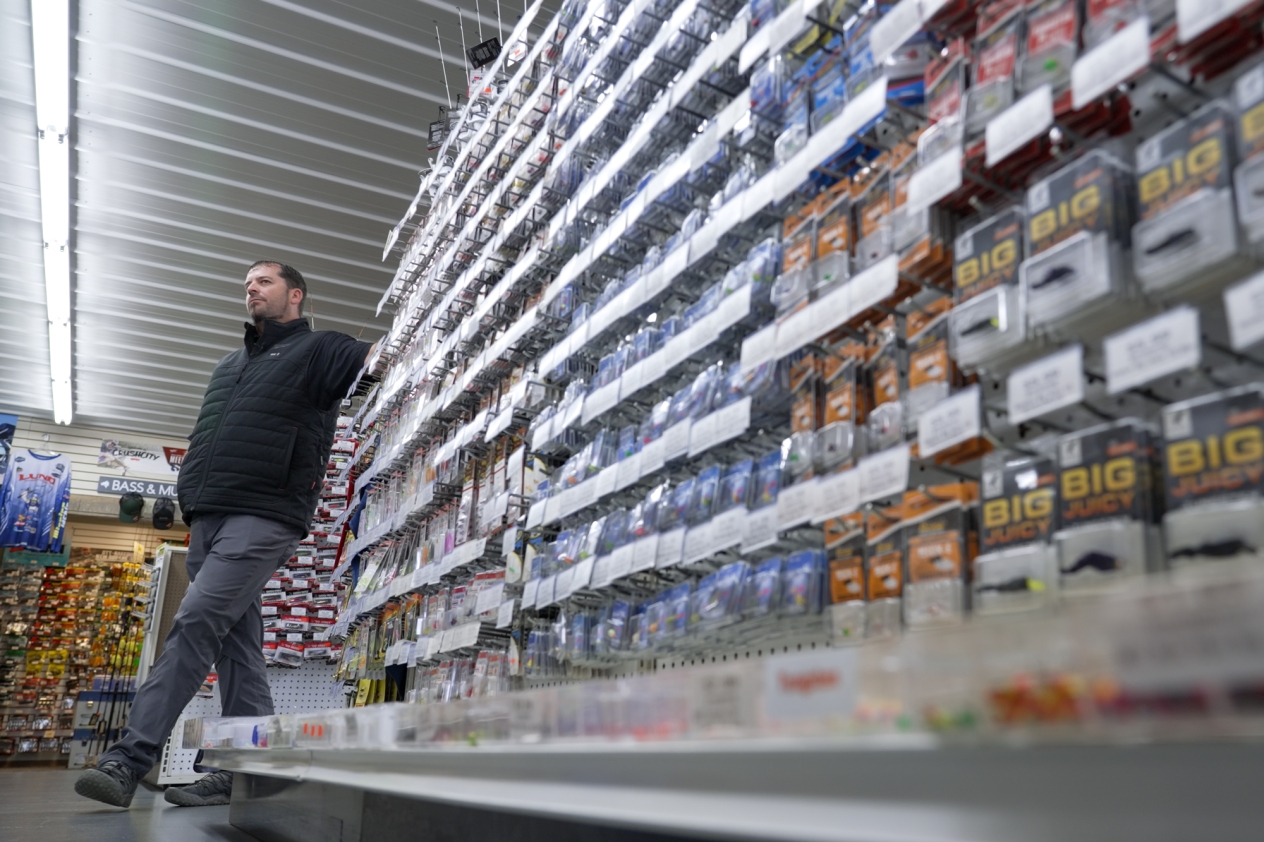
Indeed, ads in fishing magazines and on fishing websites tout tungsten tackle over lead for its performance aspects. Because tungsten is about 1.7 times denser than lead, tungsten tackle can be made smaller and less visible to fish. It also sinks quicker, getting to the fish faster, and its density transfers motion better, which means anglers feel fish bite sooner.
Tungsten also benefits those who make use of forward-facing sonar, an increasingly popular piece of fishing gear for ice fishing and open-water fishing alike: The denser tungsten shows up on sonar better than lead, allowing anglers to see how fish interact with their bait.
Schmitz said about 90 percent of his customers who buy tungsten tackle buy it for its performance aspect, but that’s not to say his customers aren’t concerned with loon deaths and other environmental harms from lead.
“In a lot of ways, we’re the ones who have to care about the state’s natural resources,” he said. “And as things started to come out about lead’s impact on the environment, more people have turned to tungsten.”
Still, Schmitz said he can’t imagine tungsten will entirely replace lead in bait and tackle shops like his for one simple reason: price.
Schmitz said he sells far less lead tackle now than he did just three or four years ago, “but I still have customers who are not willing to pay $8 for two tungsten jigs.”
Tungsten tackle typically runs about twice the price of lead, he said. While he thinks more of his customers will eventually get comfortable with spending that extra money for tungsten tackle over time, he said the MPCA’s lead-free fishing tackle rebate program will accelerate that progress.
Giving tungsten a boost
Steven Yang knows just how hard it was — and sometimes still is — to find tungsten and other lead-free tackle on store shelves. Always in search of good spots to hook crappie, bass, or walleye, he scans the offerings at gas stations and bait and tackle stores while stocking up for a day on the lake and often finds only the familiar array of lead items.
As the coordinator for the MPCA’s Get the Lead Out program, that didn’t sit well with him.
“We knew that stores had to be more incentivized to stock the lead-free tackle,” he said.
The opportunity to do so, Yang said, came when Minnesota received a portion of the settlement that BP paid after the 2010 Deepwater Horizon oil spill in the Gulf of Mexico. That spill killed a number of migrating loons from Minnesota, and the settlement included some funds for the MPCA and the Minnesota Department of Natural Resources to spend on loon restoration.
Rather than provide rebates directly to customers who bought lead-free tackle, however, the MPCA made those funds available to the retailers who stocked it. This approach not only got lead-free tackle on store shelves in Minnesota, it also helped keep the cost of that tackle down, allowing more anglers to try it and get used to it.
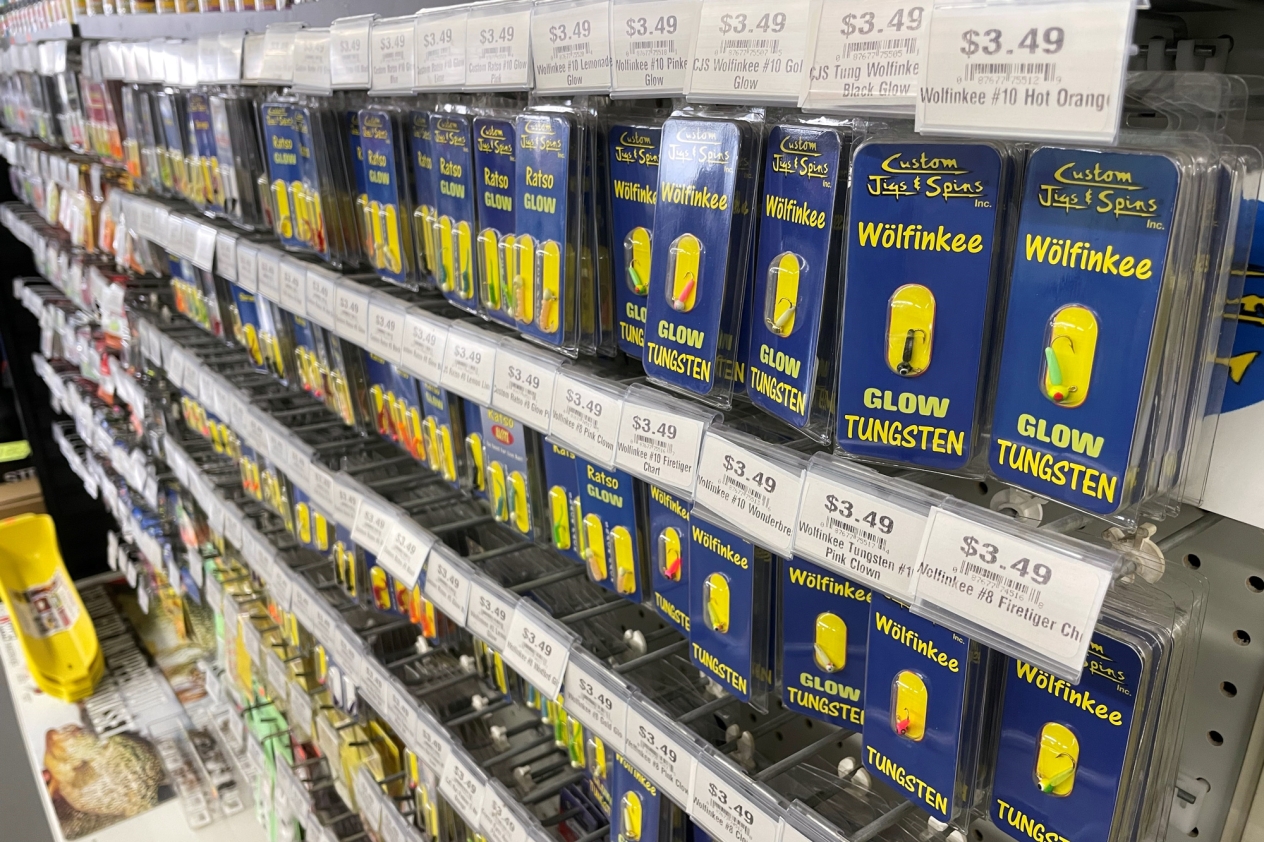
“We also wanted to give bait and tackle shops the freedom to choose what to stock,” Yang said. “We know that tackle is not one-size-fits-all.”
From April 2022 to June 2024, the first round of the program distributed nearly $12,500 in rebates to brick-and-mortar stores with less than 100 employees. Stores received a 35% rebate on purchases of eligible lead-free tackle with a maximum award of $2,000. Schmitz took full advantage of the program, using it for promotions and to push down the cost of tungsten tackle at Northwoods.
“It helped us as a smaller ma-and-pa shop to keep our prices competitive with the big-box stores,” he said.
While Yang said the first round of the grant program was a success “just for having anybody sign up,” it also provided valuable insight into how to get lead-free tackle into the hands of Minnesota’s anglers — insight that helped shape the current round of rebates.
Now funded by an appropriation from the Minnesota State Legislature, the current round of rebates aims to put more tungsten and other lead-free gear into more Minnesotans’ tackle boxes with $50,000 for rebates. Yang said there’s even potential for that number to go up with the popularity of the program. More importantly, he said, the MPCA bumped the maximum amount each store can get to $3,000 and increased the rebate percentage to 45%.
“We wanted to make this program a little more enticing to store owners,” Yang said.
Getting the lead out (of tackle boxes)
While the lead-free tackle rebate program might make it easier and less expensive for stores to offer safer alternatives, it doesn’t remove the lead currently in anglers’ tackle boxes. To that end, then, the MPCA now offers tackle exchanges through the Get the Lead Out program.
“We’ve enlisted many volunteer organizations — lake associations, environmental nonprofits, and local governments — to do outreach in their respective communities, whether it be events or meetings,” Yang said.
For those outreach meetings, the Get the Lead Out program provides educational materials and sample packs of lead-free tackle that volunteers can hand out to people who bring in their lead tackle.
According to Yang, over the past four years, the tackle exchange program has recruited over 125 volunteer organizations across Minnesota who have collected more than 1,300 pounds of lead tackle.
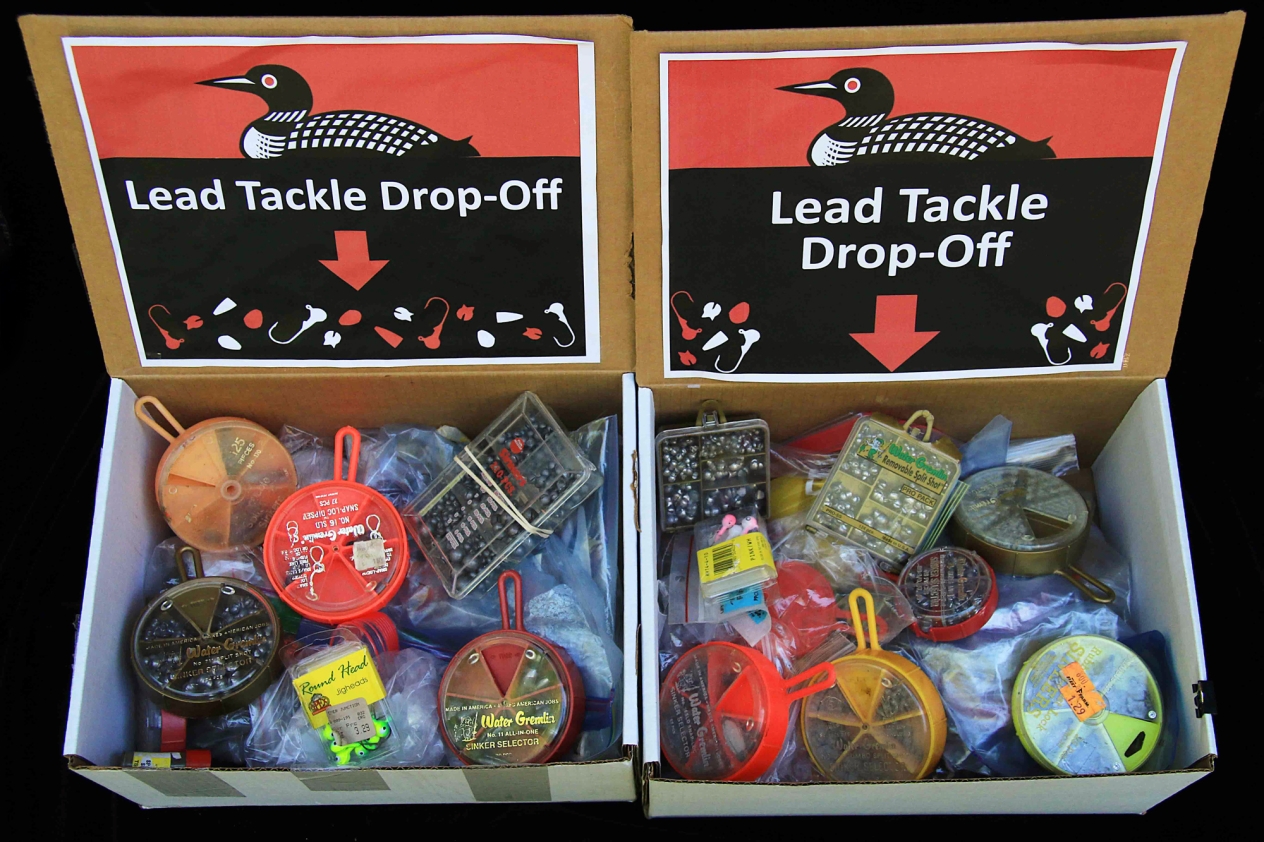
As Pokras noted, the more lead removed from the environment, the better — not just for loons but for people too.
“It should be out of every product on the market,” he said. “I’d rather be looking at loons through binoculars than on the necropsy table.”
Schmitz figures efforts like the lead-free tackle rebate grant can help work toward that goal. “It’s nice to see that the state is trying to invest some money into this,” he said.
Retailers can apply to the lead-free tackle rebate program through March 2027.
